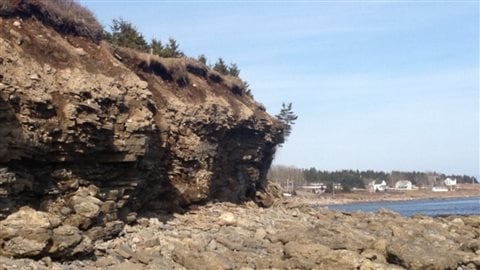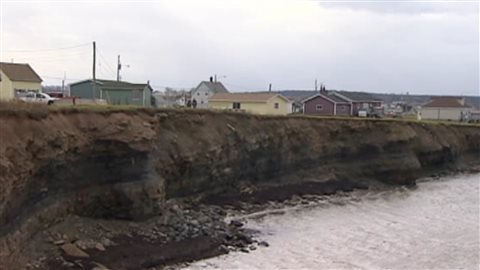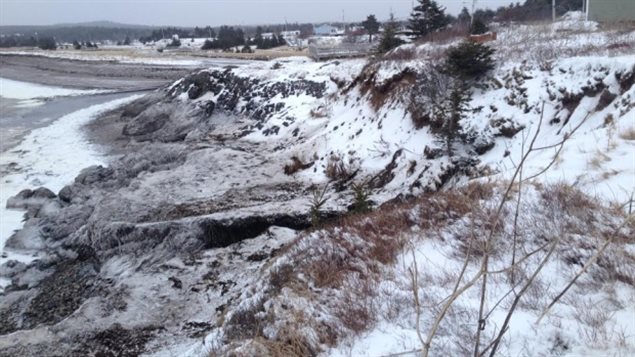Throughout the maritime provinces, climate change is causing severe erosion of coastlines.
In Cape Breton Island, many homes built well inland in the past, are now only a few metres from the sea.
Ron Phillips and his wife Annette built a home on her parents property in Main-a-Dieu in the 1970’s but have since lost 22 metres to erosion

“It’s in the last 15 years, the bank itself is actually going. The path that we walked on as children — and even my husband and I — is no longer there,” said Annette Phillips.
Climate change has meant higher seas and violent storms, which batter the shoreline. In winter, sea ice used to protect the shore from winter storms, but in recent years, with winters not as cold, and lasting not as long, that protection has gone.
The environmental Atlantic Coastal Action Program, (ACAP) has been working to mitigate the problem and are currently doing a study on “living shorelines”. These include leaving native vegetation on the bank and a strip of natural growth along the shoreline.

“We’re focusing on using vegetation solutions and soft approaches to reduce the impacts to neighbouring properties but also focusing on using native vegetation and natural ecosystem management practices that can help adapt to coastal erosion” says project coordinator Ashley Shelton
New Brunswick town-erosion 2015








For reasons beyond our control, and for an undetermined period of time, our comment section is now closed. However, our social networks remain open to your contributions.